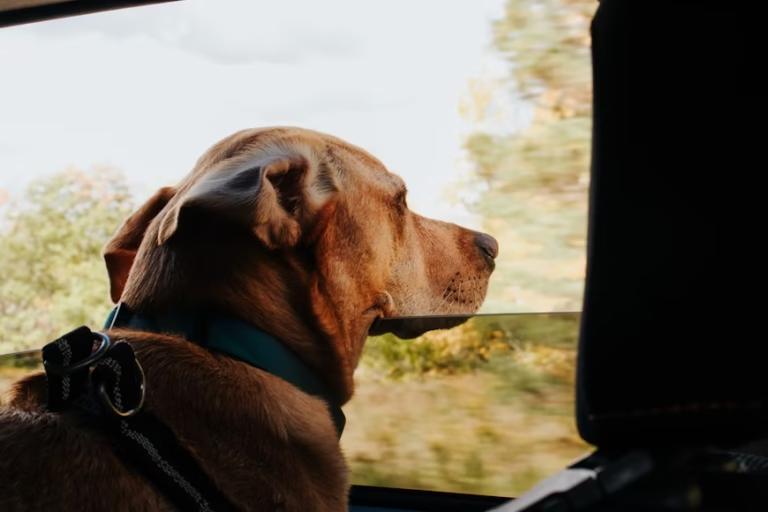Taking your pets on the road is exciting, but comfort and safety should always come first. Before hitting the highway, make sure your vehicle is set up to accommodate your furry companions. Clean the interior, vacuum pet hair, and consider installing protective seat covers to guard against scratches and spills. A car organized for both humans and animals sets the tone for a smooth journey.
Secure Space for Your Pet
Your pet needs a stable and secure spot in the vehicle. Pet carriers, crates, or harness seat belts keep them safe during sudden stops. Place carriers in well-ventilated areas away from airbags. For larger dogs, back-seat barriers work well, keeping them comfortably confined without limiting their space.
Keep the Air Fresh
Long hours in a car with pets can sometimes mean lingering odors. Using a pet safe car air freshener ensures that the ride stays pleasant for everyone without exposing your pet to harmful chemicals. Look for natural, non-toxic options specifically designed with animal health in mind.
Packing Essentials for the Road
A successful pet-friendly road trip relies on preparation. Packing smart helps you avoid unnecessary detours in search of missing items.
Food and Water Supplies
Bring enough of your pet’s regular food to last the entire trip. Sudden changes in diet can upset their stomachs. Collapsible bowls are convenient for meals and hydration breaks, and a large water jug ensures fresh water is always available.
Comfort Items
Pets feel more relaxed with familiar items around. Pack blankets, bedding, or favorite toys to give them a sense of home on the road. Chew toys are especially helpful to keep dogs entertained during long stretches of driving.
Health and Hygiene Kit
Accidents happen, so carry a cleaning kit with pet-safe wipes, waste bags, and paper towels. Don’t forget grooming tools, flea treatments, and any necessary medications. A copy of your pet’s vaccination records is also a smart addition in case of emergencies or if staying in pet-friendly accommodations.
Planning the Journey Itself
The way you structure your road trip is just as important as what you pack. Consider your pet’s needs when setting your itinerary.
Frequent Breaks
Pets, like people, need to stretch their legs. Stop every 2-3 hours to allow them to walk, relieve themselves, and release pent-up energy. Research rest areas and parks along your route so you’re never scrambling to find a suitable spot.
Choose Pet-Friendly Routes
Some destinations and highways have more pet-friendly facilities than others. Planning ahead lets you find accommodations, restaurants, and stops that welcome animals. Apps dedicated to pet travel can make this process much easier.
Maintain a Comfortable Climate
Keep your car at a steady temperature. Heat builds up quickly in enclosed vehicles, so never leave your pet alone inside. Use sunshades for windows and cooling mats for added comfort, especially during summer trips.
Safety Measures on the Road
Beyond comfort, safety is a top priority. Road trips involve unpredictability, so it’s best to prepare for the unexpected.
ID and Microchips
Make sure your pet’s collar has an updated ID tag with your current phone number. Microchipping adds another layer of protection if your pet gets lost during the trip.
Emergency Contacts
Research local vets along your travel route, especially near your overnight stops. Save their numbers in your phone for quick access.
First Aid Kit for Pets
A pet-specific first aid kit is invaluable. Include bandages, antiseptic wipes, tweezers, and any prescribed medications. Knowing how to handle minor injuries keeps you prepared until professional care is available.
Enhancing Comfort for Long Drives
When hours on the road stretch into full days, small touches make a big difference.
Seating Arrangements
Choose seating setups that maximize comfort and visibility for your pet. Many animals like to see outside, which reduces anxiety. Safety restraints or raised booster seats can help.
Noise and Entertainment
Soft background music or white noise can help mask the unfamiliar sounds of the road. If your pet gets anxious, soothing audio may calm them. Bringing interactive toys also helps distract them during long stretches.
Keep the Car Fresh
A clean-smelling vehicle is a must. Opting for a pet-safe car air freshener not only masks odors but also creates a pleasant atmosphere for both you and your pets. Natural scents like lavender or chamomile can even have calming effects during stressful travel moments.
Accommodation and Overnight Stays
Your road trip checklist isn’t complete without thinking ahead about where you’ll spend the night.
Finding Pet-Friendly Hotels
Not every hotel accepts animals, so confirm policies before booking. Many chains and boutique stays now offer pet-friendly options, often with designated areas for walks and play.
Setting Up a Sleep Space
Create a comfortable sleeping arrangement similar to what your pet has at home. Use familiar bedding, keep water nearby, and ensure the room is safe from hazards like loose cords or small objects.
Managing Routines
Even when traveling, maintaining feeding, exercise, and sleep routines helps pets feel secure. Stick as closely as possible to their normal schedule.
Final Thoughts on Pet Road Trips
Traveling with pets can be deeply rewarding, but it requires planning and attention to detail. A solid checklist—covering food, comfort, hygiene, safety, and entertainment—keeps both humans and animals happy throughout the adventure. By preparing thoughtfully, you ensure that your road trip is more than just a journey; it becomes a shared experience that strengthens the bond with your furry companions.

